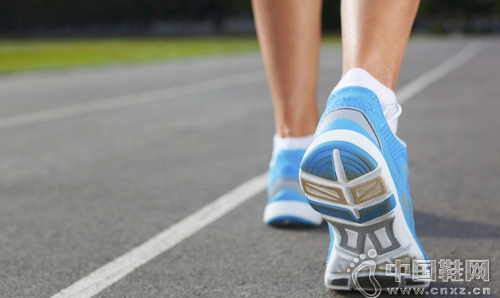The criteria you choose to use for running shoes may be wrong
Ben Wang said on August 10, "We should pay more attention to the opinions of our own bodies on the choice of running shoes." The feeling is still very subtle.

A new scientific review article on the risks of running shoes and injuries says that many runners may wear the wrong shoes during a particular run, or that they wear the right shoes but actually choose the reason for the shoes. It is wrong.
This study helps us to conclude that each of us can follow a reliable and scientifically effective method in selecting the right running shoes. But this method is so simple that most people ignore it.
There is an astonishing controversy about the association between running shoes and running injuries. And from a scientific point of view, this controversy has not been resolved.
Most of us runners have heard a saying that the choice of running shoes should mainly be based on two major technical standards.
The first one is to see if you are a flat foot, and the degree of flat feet, that is, how much your feet are bent when landing. Plastic surgeons, coaches, and runners have long argued that foot flats or oversized bows increase the risk of running injuries and should be controlled through the use of specific types of running shoes.
Recently, the problem of impact (that is, the feeling of shock we experienced when we stepped in) has received a lot of attention, especially with regard to barefoot running and whether we should not wear shoes at all. Some people who support barefoot running believe that not wearing shoes or wearing simple and lightweight shoes while running can change the impact to some extent, thereby greatly reducing the risk of injury.
But Benno Nigg, the lead author of this new comment, and his colleagues are skeptical. As an honorary retired professor of motor function at the University of Calgary, Canada, and one of the world's leading biomechanics experts, Nigg doubts whether it has a scientific basis for the right shoes to change and correct one's running posture and reduce injury. .
So, in a review published last week in the British Journal of Sports Medicine, Nigg and his colleagues reviewed decades of research on sports injuries, running shoes and the relationship between them.
Soon these researchers found that most of our knowledge about sports injuries and running shoes is actually flawed.
For example, flatfoot does not appear to be a problem that requires correction. There was a large-scale study that was conducted on a flat foot. About 1,000 running novices were distributed the same running shoes and followed for a year. Some of these runners have a flat foot and some do not.
A year later, many of the runners who had a normal foot (without over-foot flatness) were injured, but those runners who had flat foot injuries were significantly less likely to exit.
Nigg and his colleagues wrote in this commentary that the discovery meant that "more likely, the flat legs would be an advantage in preventing running injuries." Similarly, they did not find any evidence to prove that the impact of their feet on the ground would cause damage, or how much impact this impact would have on shoe change or without shoes.
Perhaps most unexpectedly, running shoes designed to "correct" running posture often have no effect, and even side effects. In a series of studies, when a group of recruits were equipped with running shoes designed to control their specific level of flatfoot problems, these soldiers had the same chance of running-related injuries as the soldiers who were randomly distributed running shoes. Even higher.
But Nigg and his colleagues concluded after analyzing the relevant research that if you select running shoes for the right reasons, you can reduce the damage.
And this correct reason has nothing to do with flat control and impact.
The researchers concluded in this review: The most important thing is to wear comfortable. In a study that began in 2001 (by Nigg), the researchers asked soldiers to test six shoe inners that differed in shock absorption, bow height, heel shape, thickness, and others. The soldiers selected a shoe inner that they felt most comfortable with, and put them in shoes during the next military training. Another group of soldiers wore standard normal shoes as a reference.
Four months later, soldiers wearing comfortable shoes with inner shoes suffered much less damage than soldiers wearing normal shoes.
Nigg said that this result makes sense in science and common sense. He also said that our body is actually a "very good referee" for how each of us should move and how to run. When we ignore or counteract the natural movement patterns of our bodies, such as trying to adjust the flat feet, the risk of injury rises.
He said that in fact, we should pay more attention to our own body's opinions on choosing running shoes.
"Try on four or five pairs," Nigg said. You can wear every pair of shoes in the store or in the neighborhood.
“People usually can immediately determine which pair of shoes are the most comfortable,†said Nigg. “It is the pair you should choose.†(This site - the most authoritative and most professional footwear information center. Brand recommendation: Mullinson Orenburg)
Sweep! Participate in the "Top Ten Brands in China's Shoes Industry" Poll

Standard Collar Shirts,Purple Stripes Men'S Shirts,Yellow Long Sleeve Shirts,Girls Jeans Coat
Zhejiang Shaoxing Xiangshuicheng Garment Co., Ltd. , https://www.sxxiangshuicheng.com